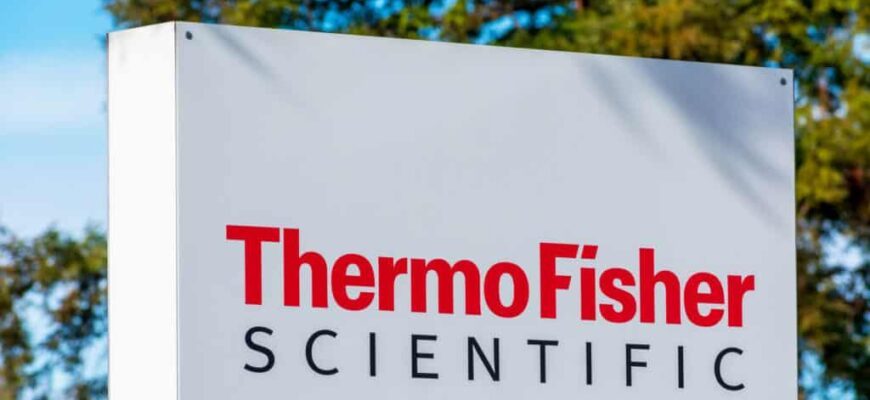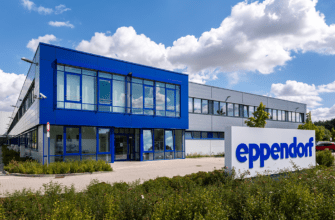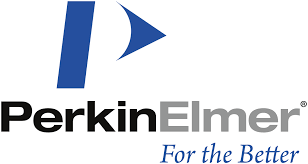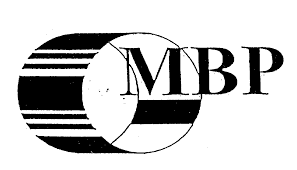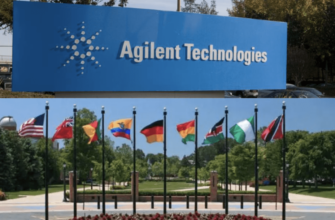Thermo Fisher Scientific: Global Leader in Serving Science
Thermo Fisher Scientific stands as a formidable force in the global scientific community, revolutionizing research, healthcare, and industrial applications through its comprehensive portfolio of products and services. This article provides an in-depth analysis of Thermo Fisher Scientific’s history, business operations, market impact, and future trajectory, highlighting how the company has established itself as “the world leader in serving science.”
History and Foundation
Thermo Fisher Scientific was formed in 2006 through the strategic merger of two established scientific companies with complementary strengths. The merger brought together Thermo Electron Corporation, founded in 1956 by George N. Hatsopoulos and Peter M. Nomikos, and Fisher Scientific, established in 1902 by Chester G. Fisher from Pittsburgh. Thermo Electron had built its reputation as a provider of analytical instruments and laboratory equipment, while Fisher Scientific specialized in laboratory supplies, chemicals, and services for scientific research.
The merger created a scientific powerhouse with approximately 30,000 employees and combined revenue of US$9 billion at inception. This union required Federal Trade Commission approval, which mandated the divestiture of Genevac due to anti-competitive concerns regarding centrifugal evaporators. By April 2007, the merger was fully completed with FTC approval, setting the stage for the company’s extraordinary growth in the following decades.
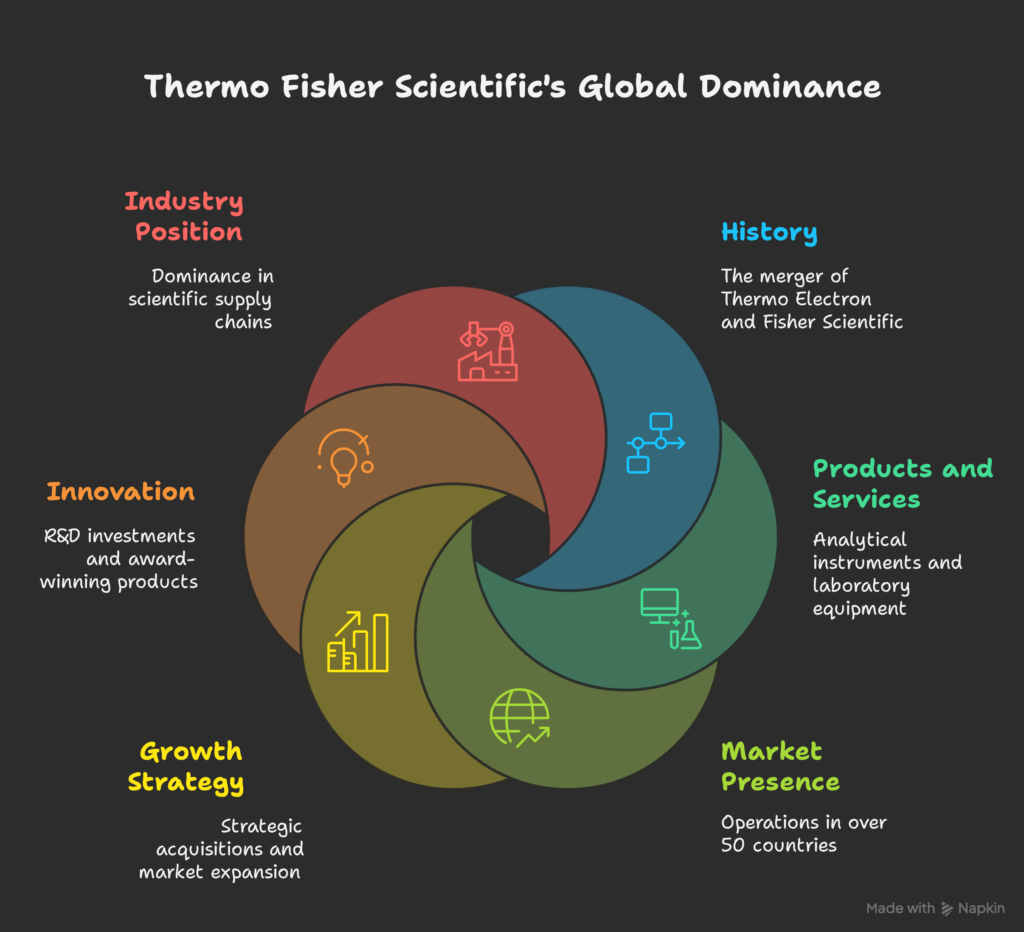
Early Business Development
Prior to the merger, both constituent companies had established significant market positions. Thermo Electron had focused on developing analytical and laboratory products, achieving revenues exceeding $2 billion by 2004. Meanwhile, Fisher Scientific had become a trusted provider of laboratory equipment, chemicals, and research supplies across healthcare, scientific research, safety, and education sectors.
Company Overview
Thermo Fisher Scientific Inc. operates as an American life science and clinical research company headquartered in Waltham, Massachusetts. The company has evolved into a global supplier of analytical instruments, clinical development solutions, specialty diagnostics, and laboratory, pharmaceutical, and biotechnology services.
As of 2023, Thermo Fisher Scientific boasted a market capitalization of $202 billion and ranked 97th on the Fortune 500 list based on its 2022 annual revenue of US$44.92 billion. With operations spanning over 50 countries and serving customers in more than 180 countries, the company has established a truly global presence in the scientific community.
Mission and Vision
Thermo Fisher’s mission statement encapsulates its purpose: “To enable our customers to make the world healthier, cleaner and safer”. This mission drives the company’s commitment to developing innovative technologies and solutions that address complex challenges across various scientific disciplines.
Products and Services
Thermo Fisher Scientific offers an extensive range of products and services organized under several premier brands, each targeting specific market segments and scientific applications.
Key Brands
The company’s portfolio is anchored by two principal brands:
- Thermo Scientific: Encompasses high-end analytical instruments, chemistry and consumable supplies, laboratory equipment, software, and services enabling integrated laboratory workflow solutions. This brand represents the legacy of Thermo Electron, enhanced by equipment, consumables, and reagents acquired from Fisher Scientific.
- Fisher Scientific: Represents a family of global product and service brands providing a complete portfolio of laboratory equipment, chemicals, supplies, and services for healthcare, scientific research, safety, and education worldwide. Specialized divisions include Fisher HealthCare, Fisher Safety, and Fisher Science Education.
Additional specialty brands include well-known industry names such as:
- Applied Biosystems
- Invitrogen
- Patheon
- PPD
- Nalgene
- Gibco
- Molecular Probes
Product Categories
Thermo Fisher’s product lines span multiple categories:
- Analytical Instrumentation: Mass spectrometry, molecular spectroscopy, elemental analysis, chromatography, and electrochemistry instruments used in proteomics, metabolomics, biomarker research, and toxicology studies.
-
Laboratory Equipment: Sample separation and preparation, sample handling, storage automation, constant temperature, and fluid handling equipment, including water purifiers, centrifuges, incubators, freezers, vacuum concentrators, and safety cabinets.
-
Research Consumables: Plastic products for life science research, PCR reagents, and other laboratory supplies.
-
Diagnostics and Clinical Solutions: Products and services for healthcare, clinical diagnostics, and pharmaceutical development.
-
Software and Services: Laboratory information management systems and data analysis solutions.
Market Presence and Global Impact
Industries Served
Thermo Fisher Scientific serves a diverse range of customers across multiple sectors:
- Pharmaceutical and Biotech: Providing solutions for drug discovery, development, and manufacturing.
-
Healthcare and Clinical Diagnostics: Offering products for hospitals, clinical laboratories, and diagnostic testing facilities.
-
Academia and Research: Supporting universities, research institutions, and government agencies with scientific equipment and consumables.
-
Environmental and Industrial: Delivering analytical solutions for environmental monitoring, industrial quality, and process control applications.
Scale of Operations
The company’s reach is extensive, with a direct sales force of thousands of professionals, complemented by catalog and e-commerce distribution channels. Many research laboratories report that 60-80% of their monthly grant spending goes to Thermo Fisher products, highlighting the company’s dominance in scientific supply chains.
Growth Through Acquisitions
A defining characteristic of Thermo Fisher Scientific’s business strategy has been its aggressive growth through strategic acquisitions. This approach has allowed the company to expand its product portfolio, enter new markets, and consolidate its industry position.
Major Acquisitions
Some of the company’s most significant acquisitions include:
- Life Technologies Corporation (2013): Acquired for US$13.6 billion after competitive bidding against Hoffmann-La Roche, adding advanced DNA sequencing and genetic testing capabilities. Life Technologies itself had been formed through earlier mergers of Invitrogen, Applied Biosystems, and GIBCO.
- Alfa Aesar (2015): Purchased from Johnson Matthey for $405 million, adding a global manufacturer of research chemicals to its portfolio.
- Affymetrix (2016): Acquired for $1.3 billion, expanding capabilities in genetic analysis technologies.
- FEI Company (2016): Purchased for $4.2 billion, strengthening the company’s Analytical Instruments business with electron microscopy technologies.
- PPD clinical research business (2021): Major acquisition valued at $17.4 billion, expanding the company’s capabilities in clinical research and drug development services.
- PeproTech (2022): Acquired for $1.85 billion, adding expertise in recombinant proteins and cytokines.
- The Binding Site Group (2022): Purchased for $2.6 billion, enhancing specialty diagnostics capabilities.
- CorEvitas (2023): Acquired for $912.5 million, adding real-world evidence capabilities in autoimmune diseases.
- Olink (2023): Purchased for $3.1 billion, expanding into proteomics and biomarker discovery.
Acquisition Strategy Impact
This acquisition-driven growth strategy has transformed Thermo Fisher from a scientific equipment manufacturer into a comprehensive life sciences and healthcare solutions provider. The company has been described by industry observers as growing “through M&A and cost cutting” rather than primarily through internal innovation. Some employees and customers have noted that “they don’t innovate, they just acquire new companies. Every major product line they launch is from another company they bought”.
Innovation and R&D
Despite perceptions of growth primarily through acquisitions, Thermo Fisher maintains a substantial commitment to research and development, investing over $1.5 billion annually to build and enhance its product portfolio.
Award-Winning Innovations
The company’s innovations have received recognition from prestigious institutions such as the R&D 100 Awards, which honor revolutionary products in science and technology. Recent award-winning innovations include:
- DynaSpin Single-use Centrifuge: A sustainable technology for separating cells from proteins, antibodies, and biomolecules, reducing plastic waste by 69%, manufacturing footprint by 32%, and warehousing footprint by up to 78% compared to traditional stainless-steel centrifuges.
-
Orbitrap Ascend Tribrid Mass Spectrometer: A versatile platform with single-cell sensitivity for proteomics and metabolomics, enabling faster and more sensitive analysis of macromolecules.
-
CTS DynaCellect Magnetic Separation System: A closed, automated isolation, activation, and bead removal system for cell therapy development and manufacturing.
Corporate Structure and Culture
Organizational Structure
Thermo Fisher Scientific operates through four primary business segments:
- Life Sciences Solutions: Provides reagents, instruments, and consumables used in biological and medical research, and in the discovery and production of new drugs and vaccines.
-
Analytical Instruments: Offers instruments, consumables, software, and services for a range of laboratory applications.
-
Specialty Diagnostics: Delivers diagnostic test kits, reagents, culture media, instruments, and associated products for clinical applications.
-
Laboratory Products and Services: Provides products and solutions needed for general laboratory operations and research.
Workforce and Culture
With approximately 130,000 employees worldwide, Thermo Fisher represents one of the largest employers in the life sciences industry. Employee experiences vary across divisions and locations, with some reporting positive aspects of company culture while others noting challenges related to compensation and benefits.
Some employees and former employees have raised concerns about compensation levels, with reports suggesting the company may “underpay” relative to industry standards for certain positions. Additionally, following acquisitions, some employees have experienced changes in benefits packages, such as reductions in paid time off or alterations to incentive structures.
Industry Position and Competition
Market Dominance
Thermo Fisher Scientific has been described as “the Walmart of science” due to its size, reach, and market dominance. The company has effectively established what some consider a near-monopoly position for certain laboratory products that research facilities require. This market position has given the company significant pricing power, with some customers noting that prices have been “cranking up at an alarming rate” in recent years.
Competitive Landscape
Despite its dominance, Thermo Fisher faces competition from several significant players in the scientific products and services market:
- Avantor (VWR): A major competitor in laboratory supplies and chemicals.
-
Millipore-Sigma: Formed through mergers of EMD, Millipore, and Sigma-Aldrich, now owned by Merck, this company competes across multiple product categories.
-
STEMCELL Technologies: A competitor in specialized areas such as cell culture and stem cell research.
-
Smaller Specialized Providers: Numerous smaller companies compete with Thermo Fisher in specific product niches, with some gaining customers who “don’t want to buy Thermo products anymore” due to concerns about pricing or product quality.
Industry Consolidation
The scientific supply industry has undergone significant consolidation over recent decades, with numerous independent companies being acquired by larger entities. For example, companies like Applied Biosystems, Invitrogen, Alfa Aesar, Peprotech, Binding Site, Molecular Probes, and Gibco were once independent but are now owned by Thermo Fisher. Similarly, EMD, Millipore, and Sigma-Aldrich were separate companies before merging to form what is now Millipore-Sigma.
Future Outlook
Growth Opportunities
Thermo Fisher Scientific is well-positioned to capitalize on several industry trends:
- Expansion of Genetic and Genomic Research: The surge in genetic-focused research creates opportunities for the company’s DNA sequencing, genetic testing, and related technologies.
-
Biopharmaceutical Development: Growing demand for biologic drugs and vaccines will drive needs for the company’s bioprocessing and pharmaceutical development solutions.
-
Clinical Diagnostics Advancement: Continued evolution of diagnostic technologies offers growth potential in the company’s diagnostic testing platforms.
-
Research Automation: Increasing demand for laboratory automation and high-throughput technologies aligns with the company’s instrument and software capabilities.
Challenges
The company also faces several potential challenges:
- Pricing Pressures: Academic and research institutions facing budget constraints may resist price increases, potentially impacting revenue growth.
-
Integration of Acquisitions: Maintaining product quality and customer service while integrating numerous acquired companies presents ongoing operational challenges.
-
Competition: Specialized competitors offering better service, competitive pricing, or innovative technologies could erode market share in specific segments.
-
Monopoly Concerns: The company’s market dominance could potentially attract regulatory scrutiny regarding competitive practices.
Conclusion
Thermo Fisher Scientific has established itself as an undisputed global leader in scientific products and services through a combination of strategic mergers, acquisitions, and ongoing innovation. From its formation in 2006 through the merger of Thermo Electron and Fisher Scientific, the company has transformed into a comprehensive provider of solutions across the life sciences, healthcare, and industrial landscapes.
With annual revenue exceeding $44 billion, a market capitalization of over $200 billion, and approximately 130,000 employees worldwide, Thermo Fisher’s scale and reach are unmatched in the scientific community. Its extensive product portfolio, spanning from basic laboratory consumables to sophisticated analytical instruments and clinical research services, enables it to serve customers across pharmaceutical, biotechnology, academic, healthcare, and industrial sectors.
While the company faces challenges related to integration of acquisitions, pricing pressures, and potential competitive concerns, its strong market position and ongoing investments in research and development position it well for continued growth and impact on scientific advancement globally. As research in genetics, proteomics, and other cutting-edge fields expands, Thermo Fisher Scientific remains uniquely positioned to enable scientific progress and fulfill its mission of making the world healthier, cleaner, and safer.

